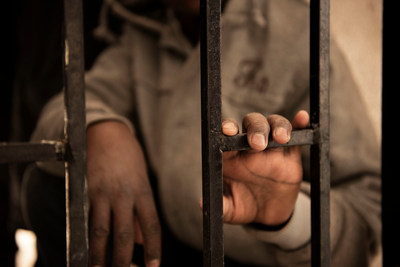In 2018 make migration safe for every child - UNICEF
In 2018 make migration safe for every child - UNICEF
Canada NewsWire
NEW YORK, Dec. 15, 2017
An estimated 400 children have died along Central Mediterranean route this year, showing dangers children face without safe migration pathways
Download photos here: http://uni.cf/2BlX6ga
NEW YORK, Dec. 15, 2017 /CNW/ - 2018 could be a landmark year for migrant children if countries follow best practices to ensure their safety and wellbeing – UNICEF said today ahead of International Migrants Day on 18 December.

Some 50 million children around the world are on the move. Much of this migration is positive, with children and their families moving voluntarily and safely. Yet the migration experience for millions of children is neither voluntary nor safe, but fraught with risk and danger.
Approximately 28 million children have been driven from their homes by conflict. In many cases, children and families without sufficiently safe and regular pathways to migrate have little choice but to turn to smugglers, traffickers and dangerous informal routes that put their safety at tremendous risk.
The perilous Central Mediterranean route from Libya to Italy is one such example. This year alone, nearly 15,000 unaccompanied children have reached Italy by sea – their journeys typically facilitated by smugglers and traffickers. UNICEF estimates that more than 400 children have died trying to make this trip since the start of the year, while thousands have suffered abuse, exploitation, enslavement and detention while transiting through Libya.
"For countless children, migration is safe and regular – helping them, their families and communities to grow and transform," said UNICEF Director of Programmes Ted Chaiban. "But there is another reality for millions of children for whom migration is highly dangerous and not by choice. The Central Mediterranean route is a case in point where thousands of vulnerable children risk their lives every year to reach Europe because safe and regular migration pathways are not available to them."
Next year will see negotiations and adoption of the Global Compact for Migration, a landmark intergovernmental agreement that will cover all dimensions of international migration. It is a moment for countries to agree on actions that will support migrant children in line with the New York Declaration for Refugees and Migrants and the Convention on the Rights of the Child.
Amidst ongoing negotiations over the substance of the Compact, UNICEF has continued its call on Member States to include the rights, protection and wellbeing of uprooted children as central commitments in the final text.
"Migration, especially for children, does not have to be dangerous," said Chaiban. "The policies, practices and attitudes that put migrant children at risk can and must change – 2018 is the time to do so and the Global Compact for Migration is one opportunity."
Many national, regional and local governments around the world have already chosen to take positive measures to protect and care for migrant children. Some of these good practices, highlighted in the recent UNICEF report Beyond Borders, include:
- Invest in strong and inclusive national child protection systems to protect migrant children from exploitation and violence;
- Invest in reception and care capacities and promote community-based alternatives to detention, such as regularly reporting requirements, guarantors or bailees;
- Remove practical obstacles which put family unification on hold or out of reach for too many children, including narrow definitions of family or financial thresholds;
- Implement returns with a focus on the individual – the child and their best interest determination, the mother, the father – and design reintegration measures that address her or his needs and benefit the community sustainably;
- Open schools and health centres to migrant children and put in place 'firewalls' between immigration enforcement and public services - to keep every child learning and healthy and ensure access to justice and housing without fear of detection, detention or deportation;
- Improve the conditions for remittance transfers so more children can be sent to school or to the doctor.
Notes for editors:
UNICEF has been asking governments and partners to embrace six essential policies outlined in the UNICEF Agenda for Action for Children Uprooted:
- Protect child refugees and migrants, particularly unaccompanied children, from exploitation and violence;
- End the detention of children seeking refugee status or migrating, by introducing a range of practical alternatives;
- Keep families together as the best way to protect children and give children legal status;
- Keep all refugee and migrant children learning and give them access to health and other quality services;
- Press for action on the underlying causes of large scale movements of refugees and migrants;
- Promote measures to combat xenophobia, discrimination and marginalization in countries of transit and destination.
About UNICEF
UNICEF has saved more children's lives than any other humanitarian organization. We work tirelessly to help children and their families, doing whatever it takes to ensure children survive. We provide children with healthcare and immunization, clean water, nutrition and food security, education, emergency relief and more.
UNICEF is supported entirely by voluntary donations and helps children regardless of race, religion or politics. As part of the UN, we are active in over 190 countries - more than any other organization. Our determination and our reach are unparalleled. Because nowhere is too far to go to help a child survive. For more information about UNICEF, please visit www.unicef.ca. For updates, follow us on Twitter and Facebook or visit unicef.ca.
SOURCE UNICEF Canada

View original content with multimedia: http://www.newswire.ca/en/releases/archive/December2017/15/c6410.html
